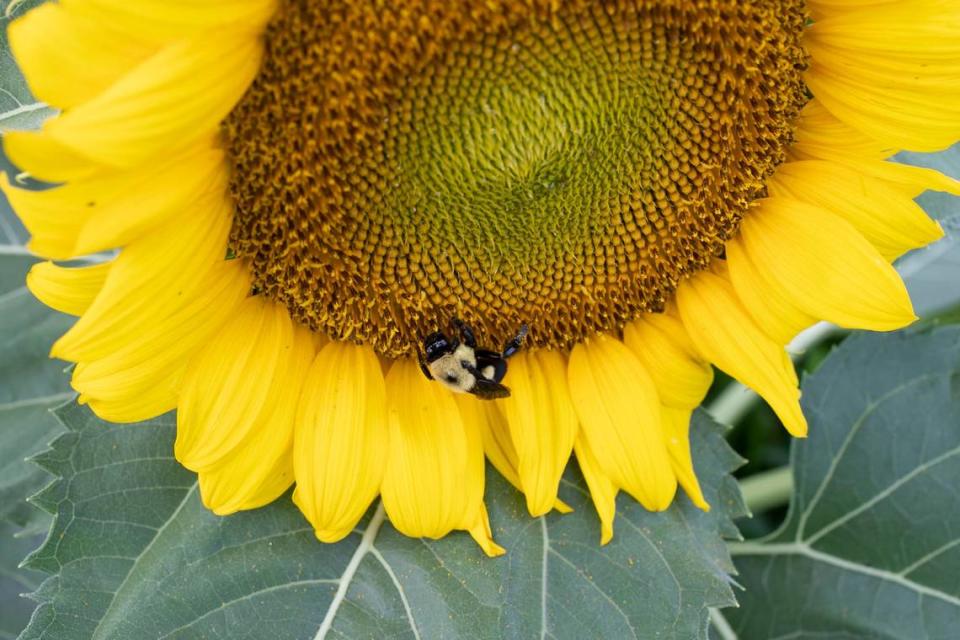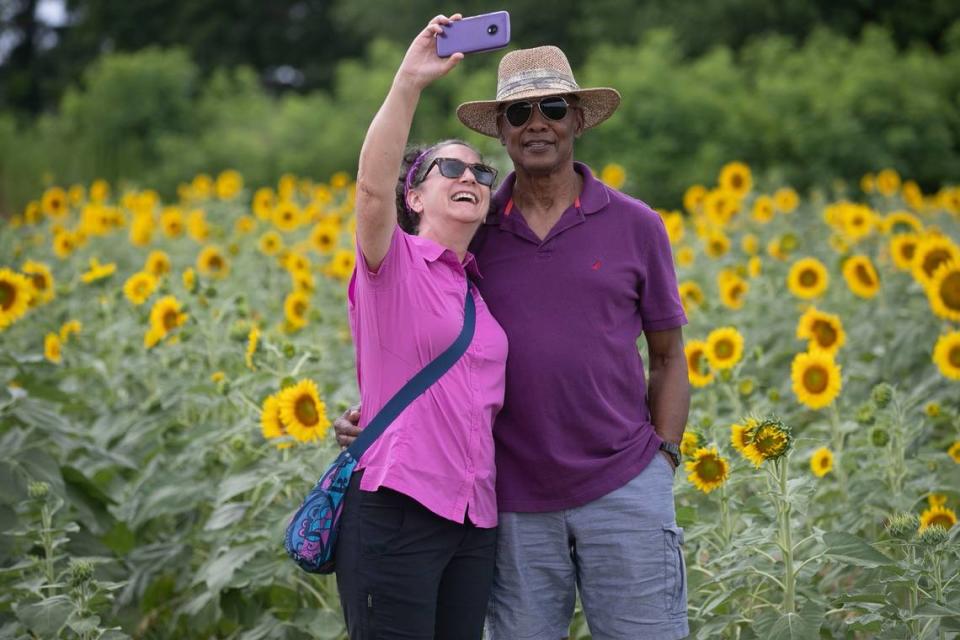Raleigh will become the ‘City of Sunflowers’ again, with these prime spots for viewing
The sunflowers are about to bloom again in Raleigh.
After the COVID-19 pandemic limited the ability to view the city’s famous sunflowers last year, the North Carolina Museum of Art and Dorothea Dix Park are teaming up to offer visitors access to more than 8 acres of sunflower fields across the city this summer.
Through the collaboration — dubbed “City of Sunflowers” — NCMA and Dix Park hope to celebrate new sunflower plantings in both locations. The sunflowers were planted in April, and they are expected to finish blooming in late July.
Visitors are welcome to visit both locations throughout the summer.
“We started to talk about collaborating in early 2020, before the pandemic, but we had to change our plans,” said Lauren Danforth, the director of communications at Dix Park. “Now we’re excited to both plant these sunflower fields, in these two very unique locations, and encourage folks in Raleigh to visit one or the other or both.”
Visiting both won’t necessarily require driving from one location to the other — visitors can travel between the two via greenway connections, either by foot or by bike. Both locations offer Citrix Cycle bike rental stations.
At NCMA, viewers can view the colorful sunflowers, zinnias, and cosmos along with the Museum Park’s outdoor art offerings, while the Dix Park field offers a combined view of the sunflowers and the Raleigh skyline.

Birds and bees benefit, too
Dix Park debuted its five-acre sunflower field in 2018. The city decided not to plant the field last year to discourage crowds from gathering. While NCMA did plant its sunflower field last year, this year it has introduced a new field below the Ellipse lawn, which is more accessible to people of all ability levels.
Visitors aren’t the only ones who will benefit from the sunflower plantings, said Rachel Woods, the curator of horticulture and sustainability at the Museum of Art. The flowers also attract pollinators, including bees and a variety of different birds.
“Visitors enjoy sunflowers, but we do it for the pollinators too,” Woods said. “When you see the flocks of bluebirds and goldfinches moving through the field, it’s just this whole other layer of natural beauty.”
At the end of the summer, when the bloom is over, Raleigh water officials will harvest the sunflower seeds for biofuel. In the past, Raleigh has used the sunflower seed oil for purposes ranging from fueling farm equipment to educational demonstrations at events like the North Carolina State Fair.
“So our fuel promotes education throughout the state,” Danforth said.

‘Nerdy science things’
The Museum of Art will offer a two-part nature photography workshop in the sunflower field on July 20 and 27, though visitors are encouraged to take photos throughout the summer.
“The best time to come for photos is early in the morning,” Woods said. “Sunflowers, more when they first start blooming, they follow the sun, so early in the morning, around 8 o’clock, if you go to the bottom of the sunflower field, all the flowers are facing you.”
Danforth said she hopes that visitors will not only enjoy the beauty of the sunflower fields, but also appreciate the benefits they offer.
“Sunflower fields get people excited about these nerdy science things that they otherwise might not know about or understand very well,” she said. “We’re hoping to create a beautiful place for people to enjoy, but also maybe where they can learn more about our natural world and learn about things that the city is trying to do to be more sustainable.”

